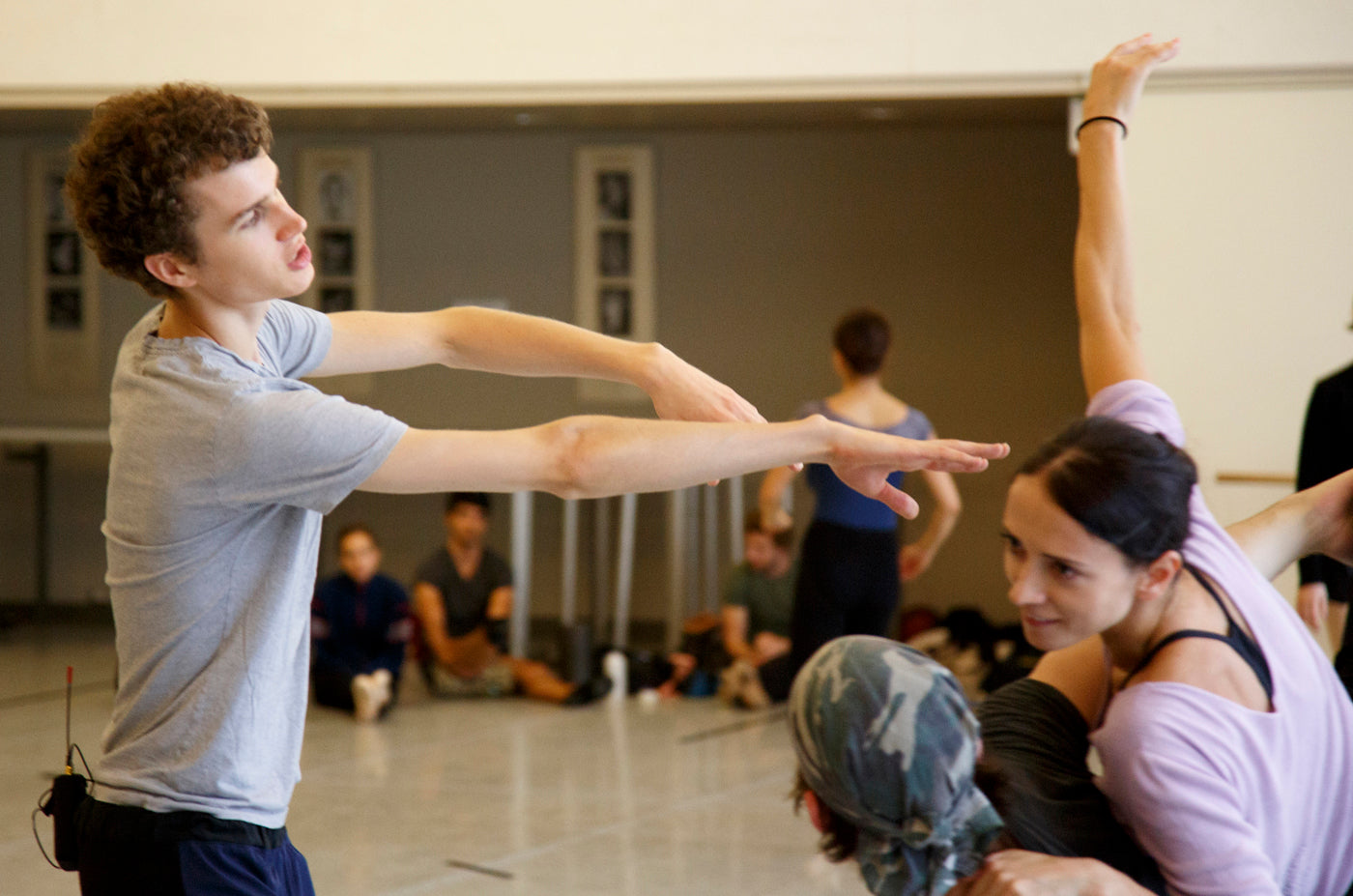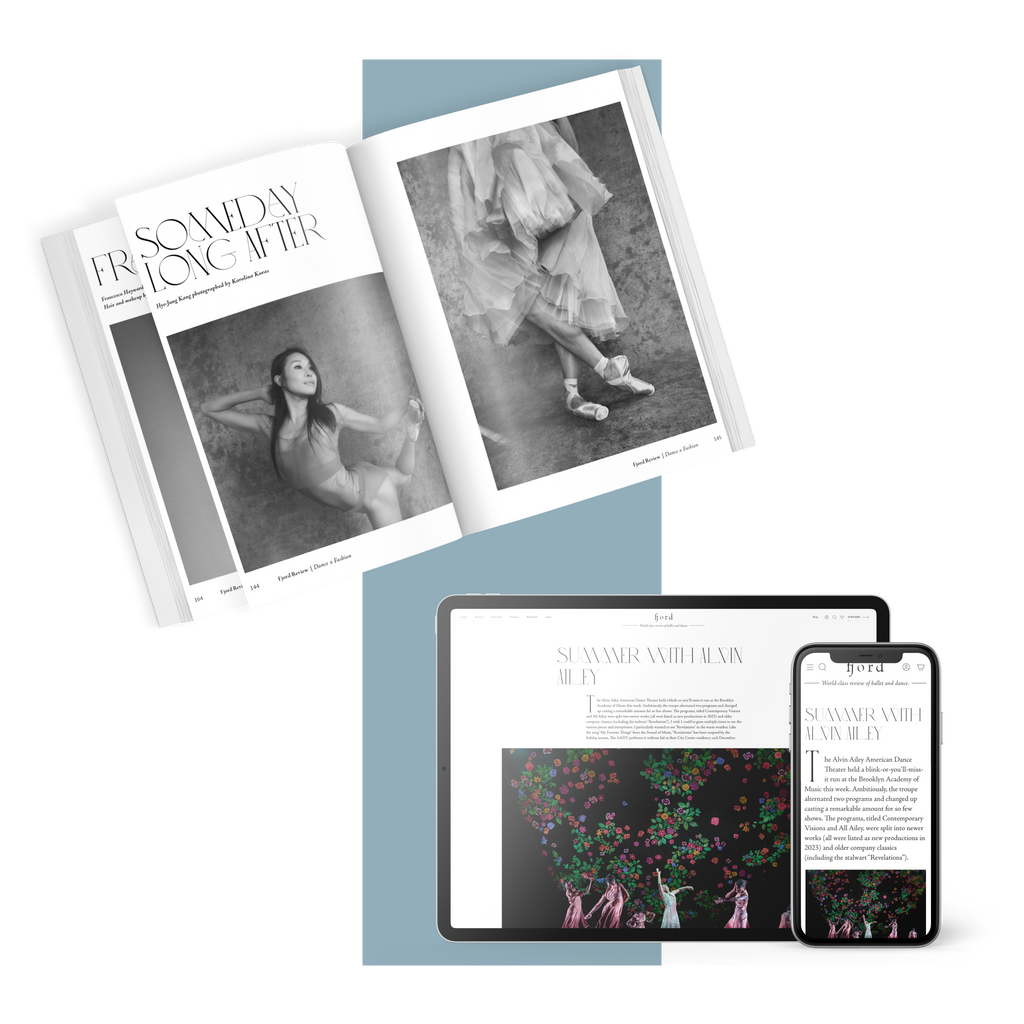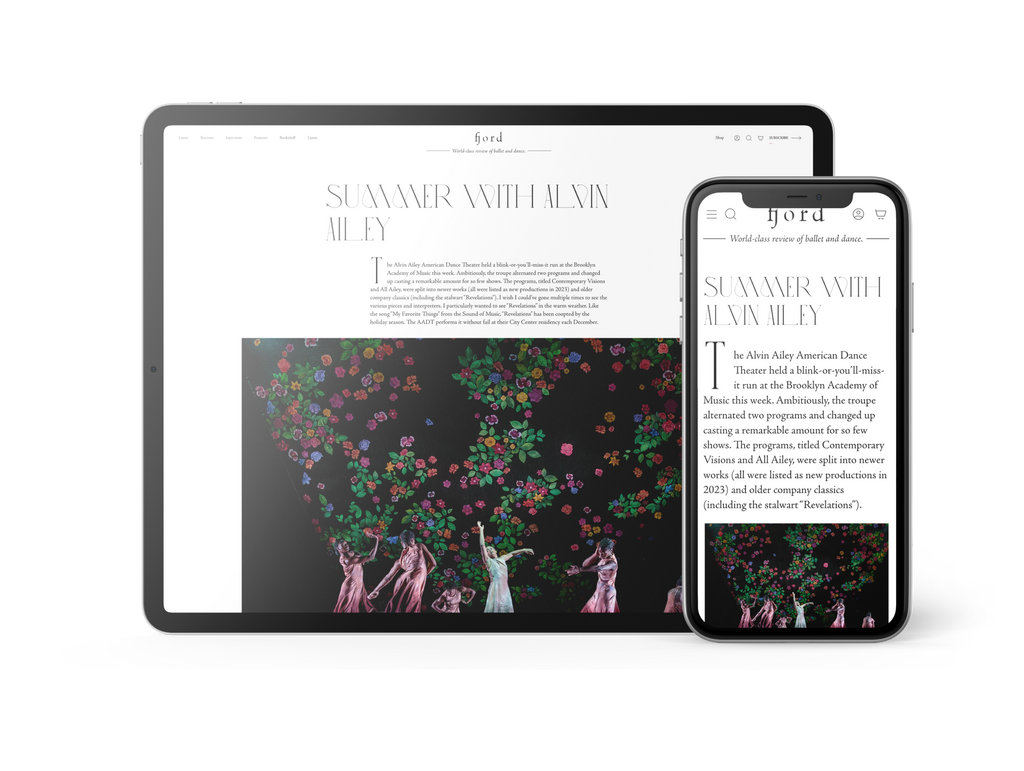“I’m honoured, and so grateful,” says Binet of the opportunity. The ballet, for seven dancers, is set to solo piano movements from Ravel’s Miroirs, which he notes, is “the right balance of beautiful and terrifying,” and will continue for nine performances post-gala.
Binet's work first made an impact on me at the Erik Bruhn Prize, hosted by the National Ballet, in March. He created a contemporary pas de deux for the National Ballet’s nominees, corps dancers Hannah Fischer and Ethan Watts. The result, “The Wild Space Between Two Hearts” was poetic and striking, and the two dancers looked brilliant in it—brilliant enough to edge Ms. Fischer to victory, winning Best Female Dancer of the evening.
“It’s rare that a piece just happens. The first draft was done in two weeks, back in October.” He points to the dancers themselves when speaking about inspiration. “Usually, if the work is reflecting something in your life, when you put that on dancers, it becomes something else. It just happened that what was going on with me, worked with them perfectly.
“Ethan and Hannah had a natural chemistry. They take risks; it’s a feeling, instinct.”
Binet attended Canada’s National Ballet School, but a career on stage wasn’t in the stars. “When I first started dancing, I didn’t really know that dancing and creating dance were two different things; and I was kind of disappointed to find out!”
In 2013 he participated in DanceLines, a choreographic initiative at the Royal Opera House led by resident choreographer Wayne McGregor. On the strength of his work, a new position of choreographic apprentice at the Royal Ballet was created for him, where he continued to be mentored by Wayne McGregor.
The experience was invaluable. “He put me in so many situations that I didn’t have a clue what to do in. He pushed me hard, wanted me to interrogate my brain and figure it out.”
Since his appointment to the National Ballet in 2013, Binet has created numerous pieces for the company, including “Unearth” (2013), “These Worlds In Us” (2014) and “Polar Night” (2012) for the company’s annual Mad Hot Ballet gala.
Asked how he might define his work, Binet says, “It’s definitely ballet—right now—but a step away from ballet, merging with something else. Everything ballet is and moving it forward.
“Ballet is capable of expressing large ideas and emotions in a way that no other art form can.”
Which is not to say it can only exist beneath proscenia. Binet worked with Scottish indie band Belle & Sebastian for their music video, “The Party Line.” The pas de deux he created for them was performed live at their recent concert in Toronto. A short film he created with company dancer Dylan Tedaldi, White Rush (above), abstractly referencing the Greek myth of Leda and her swan, premiered at the Deloitte Ignite contemporary arts festival at the Royal Opera House in 2014.
Binet is somewhat ambivalent about premieres, “It’s a horrible feeling when people are going to watch your work, that after a couple of days feels really beautiful.” I suspect it is something he may have to get used to.
Binet's “The Wild Space Between Two Hearts” will be reprised at the National Ballet’s gala on June 17, 2016.









comments